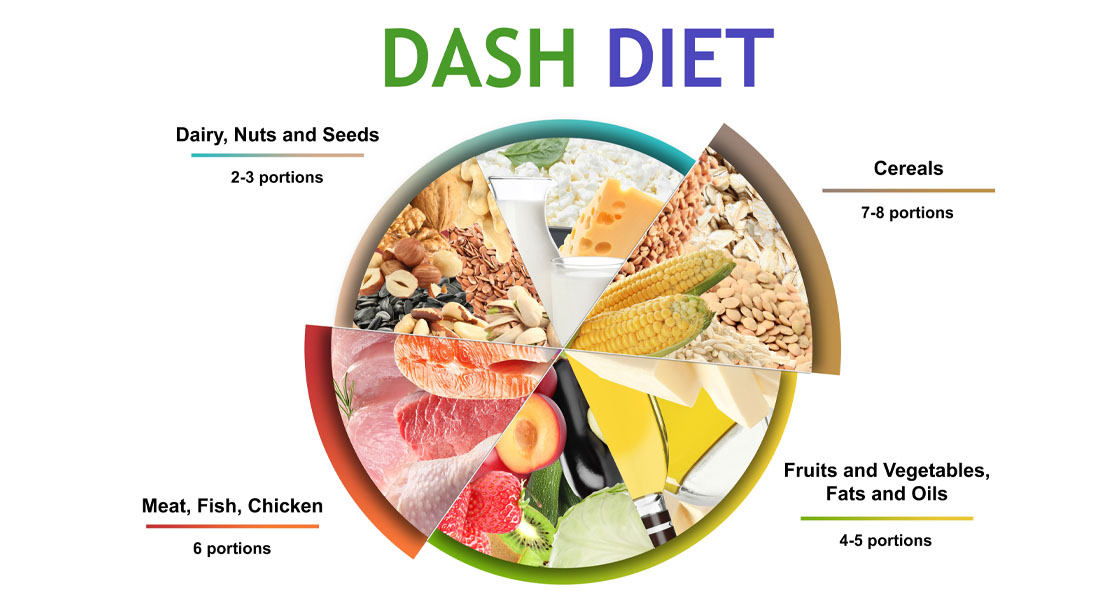28-Days-to-Lean Meal Plan
With the right plan and the right discipline, you can get seriously shredded in just 28 days.
Read article
Studies consistently cite the DASH diet as being one of the most heart-friendly diets that can help to make significant improvements in the biomarkers that are associated with systemic inflammation and subclinical cardiac injury, according to a study recently published in the Journal of the American Heart Association.
The Dietary Approaches to Stop Hypertension (DASH) eating plan was designed with the intention to help people to lower their blood pressure and improve overall health. The plan places focus on food choices that are rich in potassium, calcium, and magnesium while limiting foods that are high in sodium, added sugars, and saturated fats such as packaged, refined and procssed foods. The DASH diet suggests a well-balanced diet that includes lots of fish, poultry, whole grain, nuts, vegetables, and fruits.
This study noted that the impact of this diet on traditional cardiovascular risk factors such as blood pressure has been firmly established previously, but what was less clear is how following this diet may impact key biomarkers such as high sensitivity cardiac troponin (hs-cTnl), N-terminal pro-tyoe natriuretic peptide (NT-proBNP), and high sensitivity C-reactive protein (hs-CRP). NT-proBNP is a biomarker related to cardiac strain, hs-CRP is a biomarker related to inflammation, and hs-cTnl is a biomarker that is related to cardiac injury.
“In this secondary analysis of the DASH‐Sodium trial, we examined the time course of change in biomarkers of cardiac injury, strain, and inflammation from consuming the DASH diet in comparison with a typical American diet using measurements obtained at baseline and at approximately weeks four, eight, and 12 after randomization,” said Stephen P. Juraschek, MD, Ph.D., who is a specialist with the division of general medicine at Beth Israel Deaconess Medical Center.
This study involved 208 participants with a mean age of 47.4 years who were 59.1% females who followed the DASH diet and another 204 participants with a mean age of 49.1 years who were 54.4% females who followed a control diet that represented an average daily American diet.
According to the researchers as compared to the control diet the DASH diet was associated with a reduction in hs-cTnl after 4 weeks, but the difference was not statistically significant until reaching week 12. The also was a similar pattern observed in hs-CRP to which the importance of was highlighted in the analysis.
“Biomarkers of subclinical myocardial damage, including hs‐cTnI, may provide prognostic information on long‐term cardiovascular disease (CVD) risk, independent of traditional risk factors,” the authors wrote.“Inflammation is an established risk factor in the pathogenesis of atherosclerotic CVD, and several large observational studies have demonstrated the ability of hs‐CRP to predict CVD events independently of conventional risk factors,” the authors wrote. “Moreover, greater cumulative exposure to elevated hs‐CRP levels is associated with a higher risk of CVD events.”
There was no difference found for NT-proBNP between the two diets, which according to the researchers may be because many of the study participants were already eating below the average level of sodium intake before the start of this study
“In conclusion, in comparison with a typical American diet, the DASH diet reduced hs‐cTnI and hs‐CRP progressively over a 12‐week period, suggesting that the DASH diet has cumulative benefits over time on biomarkers of subclinical cardiac injury and inflammation,” the authors concluded. “These findings provide further insight into the positive effects of the DASH diet on subclinical cardiac injury and inflammation and highlight the need for public health policies and interventions that support sustained adherence to a healthy eating pattern for cardiovascular health.”
As with anything you read on the internet, this article should not be construed as medical advice; please talk to your doctor or primary care provider before changing your wellness routine. This article is not intended to provide a medical diagnosis, recommendation, treatment, or endorsement.
Content may be edited for style and length.
References/Sources/Materials provided by: